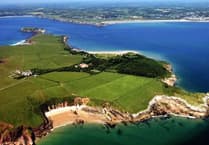Sir, As boys, my brothers and I played golf (1950s) on the pristine sands of the South Beach. You could see your golf ball 150 to 200 yards away sitting up proudly. There was no shingle or weed.
The beach began to change immediately after the removal of the concrete groynes at Giltar. There is a natural tidal flow from West to East when the tide is rising.
The groynes impeded this flow preventing the shift of sand from the Giltar end to the Esplanade cliffs. There is now a surplus of tons of sand up against the Esplanade cliffs.
Any elderly Tenby resident will tell you that there is at least eight feet or more of sand against the cliff blocking up caves that we played in as boys and girls.
Clr. Paul Rapi is correct when he says that the cause was the removal of said groynes. The sand will not come back naturally.
The installation of a series of breakwaters, maybe six, like at Amroth, at the Giltar end will help to prevent any more erosion and over time will begin to re-instate the sand.
If these were installed and sand was dredged from the Esplanade end and relocated at the Giltar end the restoration would occur more quickly.
As a final point, prior to the removal of the original groins, there was a substantial shingle bank protecting the sand dunes which has also been eroded away.
Cyril Morris (Lieutenant Commander RN [retd.),
Saundersfoot.




